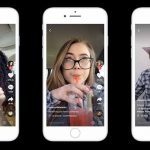TikTok, known in China as Douyin, is a short-form video hosting service owned by Chinese company ByteDance. It hosts a variety of short-form user videos, from genres like pranks, stunts, tricks, jokes, dance, and entertainment with durations from 15 seconds to ten minutes. TikTok is an international version of Douyin, which was originally released in the Chinese market in September 2016. TikTok was launched in 2017 for iOS and Android in most markets outside of mainland China; however, it became available worldwide only after merging with another Chinese social media service, Musical.ly, on 2 August 2018.
Why is TikTok so harmful?
U.S. lawmakers and federal regulators have criticized TikTok, citing practices and computer-driven promotion of content they say can endanger the physical and mental health of young users. The platform has an estimated 1 billion monthly users and is especially popular with teens and younger children.
“Our children are growing up in the age of social media — and many feel like they need to measure up to the filtered versions of reality that they see on their screens,” California Attorney General Rob Bonta said in a news release. “We know this takes a devastating toll on children’s mental health and well-being.”
Bonta said the investigation aims determine if TikTok is violating the law in promoting its platform to young people. Government officials and child-safety advocates maintain that TikTok’s computer algorithms pushing video content to users can promote eating disorders and even self-harm and suicide to young viewers.
TikTok has said it focuses on age-appropriate experiences, noting that some features, such as direct messaging, are not available to younger users.
“We care deeply about building an experience that helps to protect and support the well-being of our community, and appreciate that the state attorneys general are focusing on the safety of younger users,” the company said Wednesday. “We look forward to providing information on the many safety and privacy protections we have for teens.”
Early last year, after federal regulators ordered TikTok downloads to disclose how its practices affect children and teenagers, the platform tightened its privacy practices for users under 18.
As its popularity has swelled, TikTok has come under a barrage of criticism from state officials, federal regulators, consumer advocates and lawmakers of both parties. Republicans have especially homed in on the company’s ties to China. TikTok is owned by Beijing-based ByteDance.
Why you should delete TikTok?
It’s 4 o’clock. You say to yourself, “Gosh, I have so much work to do. I’m going to be working for the next few hours at least. Maybe I should scroll on TikTok for a while before I have to grind.” You get on TikTok for a little bit. Before you know it, it’s 7 o’clock.
Everyone knows how time consuming TikTok can be. It’s a great way to pass the time, but it can be a huge time-waster as well. Users may feel down for letting themselves get sucked into the app and waste so much valuable time watching hours upon hours of short videos. There’s no reason to feel bad, though; it was designed to be that way.
Everyone who is on TikTok knows about the scarily accurate TikTok algorithm. The algorithm is designed to keep you on the app for as long as possible — and it usually does. This algorithm uses data, such as videos you like, comment on and what you search within the app, to perfectly craft a detailed and personalized “For You Page” that is bound to be relatable and entertaining to each user for hours on end (more on how I feel about algorithms here.)
TikTok is distracting. It can distract you from your work, your relationships or even your personal problems. It’s a lot easier to ignore your problems when you have a constant stream of entertaining content that takes no brain power to understand. The only engagement necessary is some swiping and double-tapping.
Like most social media, TikTok is mind-numbing. It keeps you entertained while allowing you to shut off your thoughts: no thinking, just media consumption. When we are stressed or life feels hard, TikTok is a great way to escape our problems and not think about it, be it for a few minutes or a few hours.
Does TikTok steal your data?
URL Genius used the Record App Activity feature from Apple’s iOS to count how many different domains track a user’s activity across 10 different social media apps — YouTube, TikTok, Twitter, Telegram, LinkedIn, Instagram, Facebook, Snapchat, Messenger and Whatsapp — over the course of one visit, before you even log into your account.
YouTube and TikTok topped the other apps with 14 network contacts apiece, significantly higher than the study’s average number of six network contacts per app. Those numbers are all probably higher for users who are logged into accounts on those apps, the study noted.
Ten of YouTube’s trackers were first-party network contacts, meaning the platform was tracking user activity for its own purposes. Four of the contacts were from third-party domains, meaning the social platform was allowing a handful of mystery outside parties to collect information and track user activity.
For TikTok, the results were even more mysterious: 13 of the 14 network contacts on the popular social media app were from third parties. The third-party tracking still happened even when users didn’t opt into allowing tracking in each app’s settings, according to the study.
“Consumers are currently unable to see what data is shared with third-party networks, or how their data will be used,” the report’s authors wrote.
TikTok tells CNBC Make It that the company recently conducted its own test of its app, using the same method as the study, which found that any network contacts went to only four third-party domains, all of which the company says are regularly used by other apps for functions such as network security and user certification, among others. Those third-party domains were Google, Apple, and Snap, as well as AppsFlyer, an advertising analytics company that measures the performance of marketing campaigns on the social media platform.
Also read:





